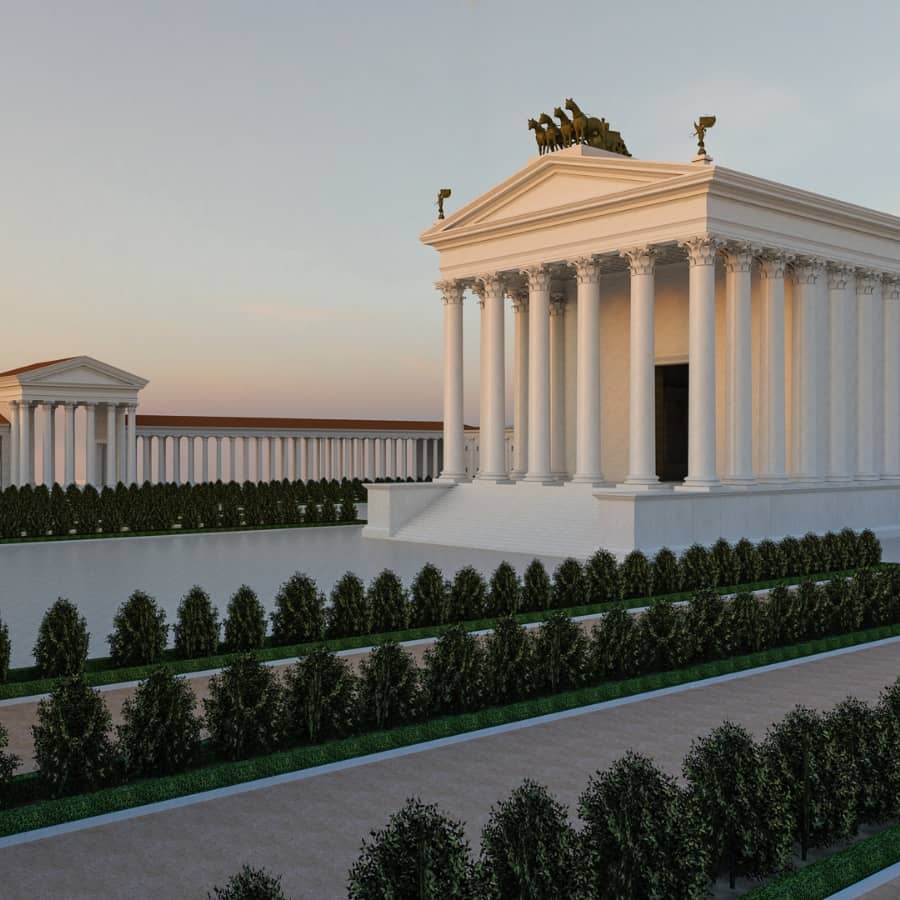Virtual Reconstruction of Ancient Rome
Philippe Fleury et Sophie Madeleine, CIREVE, ERLIS
HumaNum Consortium CNRS 3D et Humanités numériques
Université Sapienza de Rome

Ancient Rome has always especially fascinated people in the western world. Reconstructions have been increasing since the Renaissance: literary reconstructions, drawings and watercolours, physical models (e.g. P. Bigot’s and I. Gismondi’s 20th century monumental models ). Today digital techniques offer new possibilities for reconstructing the past.
The University of Caen owns the “Plan de Rome”, an exceptional example of European cultural heritage. It is a large plaster model of nearly 70 square metres which represents ancient Rome in the 4th century CE. It is the work of the architect P. Bigot (1870-1942), winner of the Grand Prix of Rome and professor at the Ecole des Beaux-Arts in Paris. Its only equivalents are its twin in Brussels (Belgium) and the model made by I. Gismondi in Rome.
Paul Bigot’s model arrived in Caen by chance; Bigot had bequeathed his work to one of his pupils, Henry Bernard. Bernard was chosen as architect for the reconstruction of the University of Caen after the destruction of the Second World War and he gave the Bigot model to this institution. This physical model is a scientific and pedagogic object. It is used for research and for teaching but it has its limits. The first limit is the date of its creation. Bigot’s model was completed in 1913, with some corrections made between the two world wars. Since the 1950s, there have been new discoveries while earlier data have been reinterpreted. Updating cannot be carried out on the physical model because it is classified as a historic monument. The second limit is the way it can be used. A physical model on a scale of 1:400 can only be visited from an external viewpoint, making indoor spaces inaccessible and details not visible.
The creation of a new model using 3D technologies has proven successful. Nevertheless this model cannot be a duplicate of the physical model (a scan for example). It had to be a new creation. Three main reasons explain why we preferred modelling Rome by hand. Firstly, the physical model scale was 1/400 and if we had carried out a 3D scan, there would have been significant distortion of measurements. Second, as we have mentioned, Bigot’s model cannot be updated. Third, we cannot use the terrain of the physical model, because it is a “Plan relief” where the elevations have been deliberately erased to make all buildings visible from the edge of the model. We therefore sought to create the new model in a scientific environment to make it more suitable for research and educational purposes. The work we are presenting is being carried out by the research team “Littératures, Imaginaires et Sociétés” (ERLIS – groupe “Plan de Rome” – Université de Caen 2014a –) with the support of the CIREVE at the University of Caen Basse-Normandie. The aims of this technical platform is to promote the use of virtual reality in all the areas possible, in particular in the field of archaeological reconstitution.
A new reconstruction of ancient Rome in Caen: for what and for whom?
Our objective is to provide tools for a better understanding of ancient Rome. The work involves the development of a fully interactive model of ancient Rome that includes both its architecture and the machinery in use. The visitor of the virtual model is able to wander through a full-scale city and enter most of its large public monuments and a number of private residences. The expected project results are: firstly a digital 3D model of Rome as it was in the 4th century CE; secondly a digital 3D model of the principal machinery used in the Roman world; and thirdly links for each digital model to the body of sources (documentary, archaeological, and iconographic) used in their development. The body of source material is directly accessible via the interactive model. The scientific objective is to provide a tool for researchers to test their architectural and topographical assumptions, to test the machines’ functionalities, and to illustrate the assumptions developed regarding the reconstruction of the city. The virtual model is inseparable from research on the history of the real model, and furthermore, the updating of Paul Bigot’s work highlights the evolution of archaeological and historical knowledge of ancient Rome. The educational objective is to provide students and secondary school pupils, but also the public at large, with a vivid illustration of ancient Rome and an example of the ancient urban reality that is easily visualised on screen. Each year, three thousand school children visit the model in Caen and each month a hundred and fifty people attend “The Nocturnes du Plan de Rome”, an interactive visit of a part of virtual Rome.
